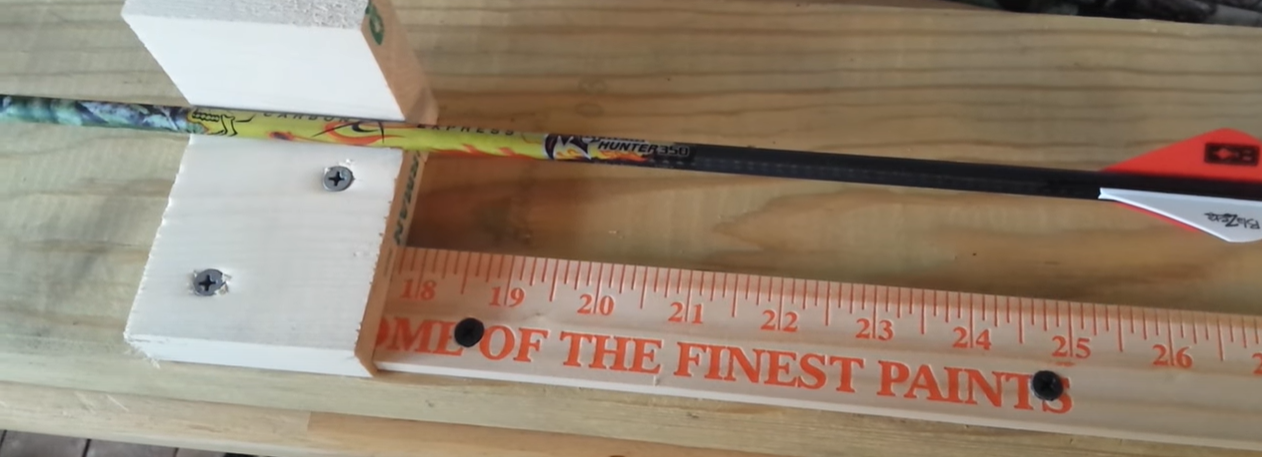Carbon arrows have become increasingly popular among archers due to their durability, consistency, and accuracy. However, one of the drawbacks of carbon arrows is that they come in a standard length that may not suit everyone’s needs. Fortunately, cutting carbon arrows at home is a relatively simple process that can be done with just a few tools. In this article, we will guide you through the process of cutting carbon arrows at home and provide some tips to ensure that you do it safely and effectively.
Why do you need to cut carbon arrows?
Cutting carbon arrows is essential to ensure that they fit your bow correctly. An arrow that is too long or too short can negatively impact your accuracy, stability, and safety. If the arrow is too long, it may hit the bow or the shooter’s arm, causing damage or injury. Conversely, if the arrow is too short, it may not reach the intended target or may not have enough kinetic energy to penetrate the target. Therefore, it is essential to cut carbon arrows to the correct length to ensure optimal performance.
How to cut carbon arrows?
Step 1: Gather the Necessary Tools
To cut carbon arrows at home, you will need a few basic tools, including:
- Measuring tape or ruler
- A carbon arrow
- A 2″ x 1/32″ x 3/8”or 2”x 1/16”x 3/8”cutting disc
- Safety glasses
- 220 grit sandpaper
Step 2: Measure and Mark the Arrow
Before cutting the arrow, you need to measure and mark the length you want. It’s essential to measure the arrow carefully and accurately to avoid cutting too much or too little.
To measure the arrow, hold it against a flat surface and use a ruler or measuring tape to determine the length you want. Once you’ve decided on the length, mark it on the arrow using a marker or a piece of tape.
Step 3: Secure the Arrow
Before cutting the arrow, you need to ensure that it’s secure and won’t move during the cutting process. You can do this by clamping the arrow into a vise or using an arrow cutting jig.
An arrow cutting jig is a device specifically designed to hold an arrow securely in place while you cut it. It usually consists of a base and a clamping mechanism that holds the arrow in place. If you plan on cutting arrows frequently, an arrow cutting jig is a worthwhile investment.
Step 4: Cut the Arrow
Once the arrow is secured, it’s time to cut it. The most common tool used for cutting carbon arrows is a rotary tool such as a dremel with cutting disc attachment. The cutting disc should be the appropriate size for the arrow diameter, and it’s essential to use a cutting disc for carbon arrows.
To cut the arrow, hold the rotary tool perpendicular to the arrow and slowly cut through the shaft. Be sure to follow the line you marked in step 2 and cut the arrow in a straight line. It’s also essential to wear safety glasses to protect your eyes from any flying debris.
Step 5: Sand the Cut End
Once you’ve cut the arrow, you need to smooth the cut end to remove any burrs or rough edges. Use a fine-grit sandpaper (220 grit) to sand the cut end of the arrow until it’s smooth and even. Be sure to sand the end evenly to ensure that the arrow flies straight.
Step 6: Clean the Arrow
After sanding the cut end, it’s important to clean the arrow to remove any dust or debris. Use a soft cloth or a cotton swab to clean the inside of the arrow shaft and remove any remaining debris.
Step 7: Install the Arrow Point
Now that you’ve cut and sanded the arrow, it’s time to install the arrow point. Depending on the type of arrow point you’re using, the installation process may vary. In general, arrow points are installed by screwing them into the end of the arrow shaft.
Before installing the arrow point, it’s essential to ensure that the threads on the point and the arrow shaft are clean and free of debris. Apply a small amount of arrow point glue to the threads before screwing the point onto the arrow shaft.
Step 8: Test the Arrow
After installing the arrow point, it’s important to test the arrow to ensure that it flies straight and true. To do this, you can shoot the arrow into a target and observe its flight pattern.
If the arrow veers off course or flies inconsistently, it may be due to an uneven cut or an improperly installed arrow point. In this case, you may need to re-cut the arrow or adjust the arrow point.
Tips for Cutting Carbon Arrows at Home
- Always wear safety glasses when cutting carbon arrows to protect your eyes from debris.
- Use a cutting discspecifically designed for cutting carbon arrows. Using the wrong disc can result in uneven cuts and damage to the arrow shaft.
- Measure the arrow carefully and mark the cut line clearly to ensure an even cut.
- Secure the arrow properly before cutting it to prevent it from moving during the cutting process.
- Sand the cut end of the arrow evenly to ensure that it flies straight.
- Clean the arrow shaft after cutting and sanding to remove any debris.
- Use arrow point glue to secure the arrow point and ensure a tight fit.
Conclusion
Cutting carbon arrows at home is a simple process that can be done with just a few basic tools. However, it’s essential to take safety precautions and follow the steps carefully to ensure a clean and even cut. By following the tips outlined in this article, you can cut your carbon arrows to the perfect length and improve your accuracy on the archery range or in the field.




